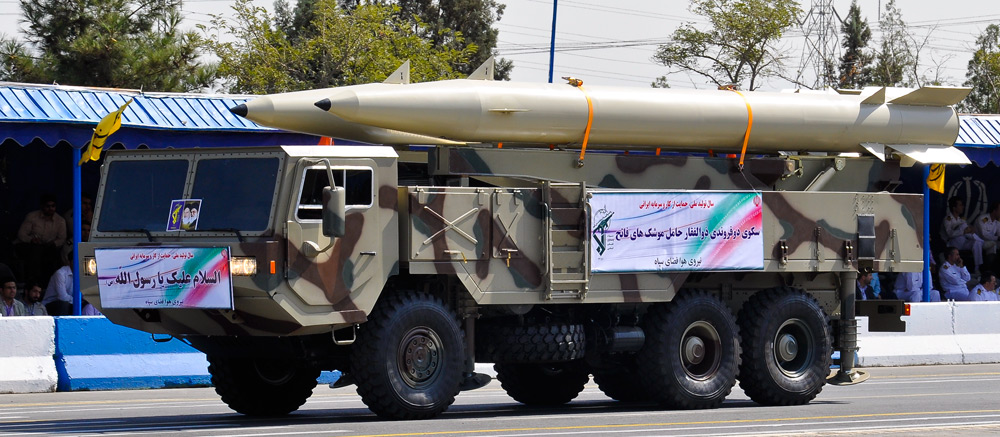 Iran could develop and test an intercontinental ballistic missile capable of reaching the United States by 2015, according to a new report by U.S. National Air and Space Intelligence Center. Tehran’s extensive missile development program has benefited from Chinese, North Korean and Russian support over the last several years. Iran's Shahab 3 missile now reportedly has an extended range of some 1,200 miles, which may be capable of hitting U.S. bases in the region and Israel. The following are excerpts from the report with a link to the full text at the end.
Iran could develop and test an intercontinental ballistic missile capable of reaching the United States by 2015, according to a new report by U.S. National Air and Space Intelligence Center. Tehran’s extensive missile development program has benefited from Chinese, North Korean and Russian support over the last several years. Iran's Shahab 3 missile now reportedly has an extended range of some 1,200 miles, which may be capable of hitting U.S. bases in the region and Israel. The following are excerpts from the report with a link to the full text at the end.
Summary
Iran has ambitious ballistic missile and space launch development programs and continues to attempt to increase the range, lethality, and accuracy of its ballistic missile force. Iranian ballistic missile forces continue to train extensively in highly publicized exercises. These exercises enable Iranian ballistic missile forces to hone wartime operational skills and evolve new tactics. Iran is fielding increased numbers of theater ballistic missiles, improving its existing inventory, and is developing the technical capability to produce an ICBM.
Short-Range Ballistic Missiles
In August 2010, Iranian officials hailed the successful test firing of the liquid-fuel Qiam-1 surface-to-surface missile. Around the same time, the Iranian Minister of Defense told reporters that the third-generation of the Fateh-110 missile (above) had been successfully test fired and that the system was officially delivered to the missile force in September 2010. In 2012, Iran claimed to have also successfully flight tested a fourth-generation Fateh-110. Iran has also flight tested an ASBM variant of its Fateh-110 missile. A seeker has likely been added to the missile to improve the system’s accuracy against sea-based targets.
Medium-Range and Intermediate-Range Ballistic Missiles
Iran has an extensive missile development program, and has received support from entities in Russia, China, and North Korea. The Iranian Shahab 3 MRBM is based on the North Korean No Dong missile. Iran has modified the Shahab 3 to extend its range and effectiveness, with the longest range variant reportedly being able to reach targets at a distance of about 2,000 km. Iran also claims to have mass-produced Shahab 3 missiles. Iranian solid-propellant rocket and missile programs are also progressing. Iran has conducted multiple launches of the Sejjil, a solid-propellant MRBM with a claimed range of 2,000 km. In addition, Iran has conducted multiple launches of the Safir, a multi-stage SLV that can serve as a test bed for long-range ballistic missile technologies.
Intercontinental Ballistic Missiles
Since 2008, Iran has conducted multiple successful launches of the two-stage Safir SLV. In early 2010, Iran unveiled the larger Simorgh SLV. Iran will likely continue to pursue longer range ballistic missiles and more capable SLVs, which could lead to the development of an ICBM system. Iran could develop and test an ICBM capable of reaching the United States by 2015.
Land-Attack Cruise Missiles
Iran recently announced the development of the 2,000-km range Meshkat cruise missile, with plans to deploy the system on air-, land-, and sea-based platforms.
Photo credit: Fateh 110 By M-ATF, from military.ir and iranmilitaryforum.net [CC-BY-SA-3.0 (http://creativecommons.org/licenses/by-sa/3.0)], via Wikimedia Commons
